TYPE DESIGN INFORMATION PAGE last updated on Sat Jan 10 11:48:45 EST 2026
FONT RECOGNITION VIA FONT MOOSE
|
|
|
|
|
Type 3 Font Software | ||
|
|
|
|
SWITCH TO INDEX FILE
| |
Printing is used for labels, menus, orders, blackboards and so forth. The font Overlaar-Bold was obtained from a sample created using a magnetic pen on a Summasketch pad. [Google] [More] ⦿ | |
abctab2ps
| Free program for setting music and tablature, which translates an input file in the abc language into postscript. It is based on Michael Methfessel's program abc2ps. While abc2ps can only typeset music, abctab2ps is an extension by Christoph Dalitz that can also handle lute tablature. Included are four type 3 fonts: FrenchTabFont (2000, Markus Lutz), Francisque (2000, Christoph Dalitz, for french tablature in abctab2ps, designed after Francisque's lute print from 1600), SW-Borrono-PS (adaptation of the StringWalker font Borrono by Christoph Dalitz, 2000), and ItalianTabFont. [Google] [More] ⦿ |
Adobe's site with technical notes about type 1 fonts. Includes the AFM specs, the BDF specs, the type 1 specs, the PFM specs, the type 3 font specs. [Google] [More] ⦿ | |
Alain Veylit
| |
| |
Ananda Das tells the type 3 story: Type 3 is an almost-obsolete format once very popular because it was the only way for non-Adobe folks to produce PostScript fonts in the old days. The font technology was generally considered inferior because it did not allow hinting to make the fonts reproduce well on 300-dpi laser printers, although they generally were fine on filmsetters. Adobe kept the proprietary secret of how to make Type 1 fonts to themselves, so that they could sell the best-looking fonts. This, together with Adobe's then-high royalties for PostScript itself, annoyed Apple and Microsoft, so they developed TrueType as an alternative to PostScript. Learning of this development, Adobe's John Warnock publicly released the Type 1 spec so that anyone could make such a font. Thereafter, almost no Type 3 fonts were ever made. But Type 3 fonts did have some capabilities of their own, not shared with Type 1 fonts. They allowed shading and textures, as well as "random" substitution of particular glyphs, as Alan rightly pointed out. If you want to see some Type 3 fonts, they are probably still widely available at FTP freeware/shareware sites, usually under "PostScript" headings, sometimes under "PostScript Type 3". [Google] [More] ⦿ | |
Bernard Desruisseaux
| |
BitCopy 2.0 costs 2000 USD, plus 186 USD per year for maintenance. Creates bitmap fonts for Xerox FNT, PostScript type 3, AFP, HP LaserJet, PCL4 and 5, from PostScript and truetype fonts, Atech FastFonts, and other bitmap fonts. A bitmap font editor is included. By Lytrod Software Design Tools. [Google] [More] ⦿ | |
French designer (b. 1928) who made the type 3 font Delorme in 1986 with Jacques André. [Google] [More] ⦿ | |
Christoph Dalitz
| |
Computer Modern fonts
|
The Computer Modern fonts, and their derivatives, are the main fonts used by the scientific community thanks to the TeX typesetting system. Derivatives include Lucida (by Knuth's colleague at Stanford, Charles Bigelow). Lucida is used by Scientific American. The commercial MathTime font family originally developed for the American Mathematical Society (AMS) by Michael Spivak, and then extended by Y&Y, and the AMS, includes a large set of mathematical characters. Included in the CTAN subdirectories, where one can download the fonts and the sources, are now three sets of type 1 PostScript fonts, Basil K. Malyshev's BaKoMa fonts, the American Mathematical Society (or Bluesky) versions, and the Paradissa font collection for Computer Modern, Euler and Computer Modern Cyrillic, also by Basil K. Malyshev. There are also PostScript type 3 versions of the Computer Modern fonts. Doug Henderson made some outline fonts (in metafont). Concrete is a metafont family designed for Knuth's Concrete Mathematics book by Knuth himself between 1987 and 1999. In the three decades that followed the development in the late seventies, only rarely have glyphs been corrected or altered---one such instance was an error in cmmib5. Truetype version of the fonts are here. Download Computer Moder Unicode (or CM Unicode) either in PostScript or OTF formats. This family is called CMU (2007) and font names are standardized as CMU Serif, CMU Typewriter Text Regular, CMU Bright Bold Extended, and so forth. This set was created by Alexey V. Panov. [Google] [MyFonts] [More] ⦿ |
We have a battery of 12 fonts containing over 1400 characters, pairs and triples that can be fit together in interesting ways to simulate real handwriting. Shown is the "st" pair in the font Herpes. All were obtained with a magnetic pen and converted by a type 3 PostScript generator in which Bezier splines were calculated using Hobby's algorithm. Here is the triple "She" from the font PhthiriusPubis. [Google] [More] ⦿ | |
Canadian mathematician and computer scientist from the University of Waterloo who is currently a visiting postdoctoral fellow of Carleton University. Author in 2011 of Computer Modern Metafont to PostScript Type 3 Converter. He converted Knuth's 75 Computer Modern fonts with this short program, and explains: This is a collection of Knuth's Computer Modern fonts in PostScript Type 3 format. They are non-outline, non-bitmap versions which have been generated by a script which runs MetaPost on the original Metafont sources. Using the script, any CM family can be converted at any optical size, which might be useful if no Type 1 version is available and you require vector fonts, not bitmap fonts. Since they were not generated by approximating a Bézier curve to the font's contours, these can be considered the "most accurate" representations of Knuth's original design. On the other hand, they have no hinting and will not look good on-screen, except when viewed at high resolution. Also, using them with TeX requires compilation to DVI first, since pdfTeX does not seem to natively support PostScript Type 3 fonts. [Google] [More] ⦿ | |
Daniel Benjamin Miller
| |
Donald E. Knuth
| |
"D-Type Font Engine consists of an ultra-fast grayscale rasterizer capable of generating beautiful antialiased type on screen or any other raster device." It works with TrueType, type 1, OpenType and type 3 fonts. For Windows, Mac and Unix. A demo (DType V3.2) is available. Located in Toronto, Ontario. [Google] [More] ⦿ | |
Riga, Latvia-based type designer who created Swan (1992, Tilde, type 3 font) and New Symbol (2013, a type 3 dingbat font that probably also was done in the 1990s originally). Swan can be downloaded here. [Google] [More] ⦿ | |
Commercial type 1 and type 3 fonts, converted from metafont by Basil K. Malyshev. The package includes Blackboard (BBM, doublestroke), Calligraphic Fonts (Calligra, Script, Vacal, La, twcal, suetterlin), Math Fonts (StMaryrd, Wasy, YHMath, RSFS), Astro Symbols (cmastro, astrosym, moonphase), Barcodes (barcodes, wlean, wlc*), Logical diagrams fonts (loggates, milstd), CMPica, Punk, CBGreek, Concrete fonts in ATM Compatible Type 1 font format (The Concrete Roman fonts were designed by D. Knuth), Concrete Math fonts designed by Ulrik Vieth, European Concrete fonts designed by Walter Schmidt, Malvern fonts in ATM Compatible Type 1 font format. [Google] [More] ⦿ | |
FontMonger converts from Windows to Mac and vice versa, and outputs fonts on the Mac in all formats (TTF, type 1, type 3). Free Mac software. Look for fmw108.zip on the web. [Google] [More] ⦿ | |
François Belair, an ex-graduate student from McGill University in Montreal, has written a driver for a SumaTech Pad that allows one to write on a pad with a magnetic pen, capture the important points of the strokes and make Bézier curves for a PostScript type 3 font (based upon the algorithms of Knuth and Hobby explained in Knuth's The Metafont Book (Addison-Wesley, 1986)). [Google] [More] ⦿ | |
Ken Sarowiwa was the Nigerian environmental activist who was muredered by the Nigerian government which was abetted by Shell in its crime. I drew this font a little while after his death. The font was drawn on a magnetic pad, and the stroke was captured and converted by an in-house program. Sarowiwa-Plume is the same font as in the previous example, but I put a different nib on the (virtual) pen. PostScript type 3. [Google] [More] ⦿ | |
| |
François Belair has written a driver for a SumaTech Pad that allows one to write on a pad with a magnetic pen, capture the important points of the strokes and make Bézier curves for a PostScript type 3 font (based upon the algorithms of Knuth and Hobby explained in Knuth's The Metafont Book (Addison-Wesley, 1986)). The Belair family of fonts (71 fonts). These are monoline fonts on which we placed pens with nibs (still PostScript type 3). The fonts had many axes, like stroke width, nib angle, and stroke contrast. Scans: I, II, III. [Google] [More] ⦿ | |
| |
A commercial RIP Management System that accepts many inputs, including PostScript level 3, and PDF. It includes a PostScript language interpreter and rasterizer. "ScriptWorks supports all PostScript font types, including Type 0, Type 1, Type 2 (CFF), Type 3, Type 4, Type 32 and Type 42 formats. ScriptWorks comes pre-loaded with 35 standard fonts (your choice of Bitstream or Linotype), plus several system fonts. " [Google] [More] ⦿ | |
i-ching
| The i-ching package by Wlodek Bzyl contains I-Ching-Regular in type 1 format and various macros and TEX files. Author of The Tao of Fonts (TUGBoat, vol. 23, pp. 27-40, 2002, in which he explains about font design using Metafont and MetaPost. [Google] [More] ⦿ |
Ken Turner
| |
Kristen Ankiewicz offered lovely type 3 fonts and postscript examples of fancy things such as curlicue letters, and beads. She also has a lovely Celtic alphabet done in Adobe Illustrator. Fractal postscript demos as well. All free, of course. The fonts are here. Kirsten runs Ankiewicz Studios, an art studio in San Francisco. [Google] [More] ⦿ | |
Information on type 1, type 3 and other postscript fonts. [Google] [More] ⦿ | |
MetamorFont
|
|
An old discussion of a wonderful discontinued piece of software: " Metamorphosis was the premiere font conversion utility for the Macintosh and has only gotten better now that it has metamorphosed into Metamorphosis Professional. It's a fine utility from a fine company. (Altsys's portfolio also boasts Freehand (marketed by Aldus), Art Importer, and Fontographer.) Metamorphosis converts fonts and does it well. It currently boasts the ability to convert between seven outline formats: Type 1 fonts for the Mac, PC, and NeXT; Type 3 fonts for the Mac and PC; and TrueType for the Mac and PC. In addition, it can also convert any of the above formats to a PICT file containing smooth-polygon versions of the text, an EPS file containing the PostScript outlines, or a Fontographer file for editing with Fontographer. Metamorphosis Professional does its translations in one of two ways, either outline-to-outline or outline-to-PostScript-printer-to-outline. In most cases, Metamorphosis Professional will read in the outline file of one format and transform it into the new format. For a few Type 3 fonts with unknown formats, it will instead download the font to an attached PostScript printer and then have the printer send back the outlines. As an added perk, Metamorphosis Professional will allow you to convert fonts stored in a PostScript printer's RAM or ROM. Altsys is also supposed to send you a DA which will duplicate the conversion functions of the application when you register your version, though I've yet to receive mine. " [Google] [More] ⦿ | |
Apostolos Syropoulos's Perl script that generates a PostScript Type 3 font that corresponds to a METAFONT font description. In order to achieve its goal the program utilizes another program: mfplain (METAPOST with the mfplain base preloaded). The author acknowledges the help of John Hobby (the creator of METAPOST) and Yotam Medini. [Google] [More] ⦿ | |
Mike McDougall
| |
Nova Scotian who works at GrammaTech in Ithaca, NY. Mike McDougall (ex-University of Pennsylvania Ph.D. student) created a random type 3 font called Tekla (1994) as an undergraduate student at McGill University, under the supervision of Luc Devroye. He used several handwritten samples as parents to create random offspring. A companion article entitled Random Fonts for the Simulation of Handwriting has appeared in "Electronic Publishing" in 1995. See also here. [Google] [More] ⦿ | |
mpfonts
| The Computer Modern fonts are available in Type 1 format, but these renditions are somewhat thin and spindly, and produce much lighter results than the originals. It is alternatively possible to use METAFONT bitmaps, but this has its disadvantages in comparison with vector fonts. These fonts are conversions to Type 3 fonts, done entirely in METAPOST; they are vector fonts which are a direct conversion from the original METAFONT files, so they are the design most authentic to the originals. [Google] [More] ⦿ |
HeverleeOSF (1996) is my own handwriting when I am calm and serene (which is almost never). The type 3 font was obtained via the magnetic pen program of François Belair. Many characters were redrawn until I was pleased with the results. The letters OSF refer to the fact that this is an old style figures font. As with all the type 3 fonts I made, each typeface consists of Regular, Bold, Thin, and Black weights, a Small Caps collection, an Italic collection, and often an OSF collection. The sample was obtained by a special effect written directly in PostScript. [Google] [More] ⦿ | |
Free PDF417 bar code fonts in all formats (truetype, type 3). [Google] [More] ⦿ | |
Peter Vollenweider
| |
| |
Typophile discussion on random fonts. Current font formats (opentype, truetype, type 1) only permit alternate letterforms, and contextual designs. For true random on-the-fly random shapes, another medium is needed. For example, a true PostScript-based type format like type 3 would do the job. But future font formats could pick up the slack as well. [Google] [More] ⦿ | |
Random fonts
| Mike McDougall (ex-University of Pennsylvania Ph.D. student) created a random type 3 font called Tekla (1994) as an undergraduate student at McGill University, under the supervision of Luc Devroye. Tekla uses several handwritten samples as parents to create random offspring. Tekla's letters vary every time a character is needed. A type 3 font of unique versatility, Tekla may be used to simulate drunkenness, and, as the sample shows, varying degrees of instability on one page. His font has a "craziness" parameter, by which we could actually extrapolate beyond the convex polyhedron determined by the master fonts. It should prove useful in testing character recognition software. A companion article entitled Random Fonts for the Simulation of Handwriting has appeared in "Electronic Publishing" in 1995. See also here. Additional URL. [Google] [More] ⦿ |
Rechenzentrum Universität Zürich
| PostScript information and sample programs at RZU. Site by Peter Vollenweider with a ton of information. There is a crash course on Bezier curves, a type 1 version of Frutiger 47, and a random type 3 font, with line by line explanations. In German. [Google] [More] ⦿ |
Sailing Signal Flags
| Free type 3 sailing signal flags dingbat font by Ken Turner. [Google] [More] ⦿ |
A type 3 postscript font for Scrabble, written by Henry McGilton and Mary Campione, as part of chapter 10 of their successful book "PostScript by Example" (Addison-Wesley, 1992). In that same chapter, one can also find a card deck font in type 3 format. [Google] [More] ⦿ | |
Sivan Toledo is a Professor in the School of Computer Science at Tel-Aviv University. His site has information about Hebrew typography, and contains articles and other materials by typeface designers, as well as technical articles about Hebrew typography and fonts. Mostly in Hebrew. The pages contain an article by Rafael Frank entitled Hebräischen Typen und Schriftarten (Berthold, 1926). Sivan wrote a package to typeset Hebrew with vowel points using a type 3 font to set the vowel points. Mainly but not exclusively for use with TeX. Sivan has cooperated with Zvika Rosenberg (MasterFont Studio) on the production of a large number of Hebrew OpenType fonts in 2002-2003. Annotated bibliography of Hebrew typesetting (2001). [Google] [More] ⦿ | |
I created a font with 256 spirals from various mathematical families: logarithmic, polynomial, exponential, and indeed many other spirals. These may be used to test the accuracy of printers. The font is Type 3 PostScript of course. The figure shows just a small subsample of the glyphs. [Google] [More] ⦿ | |
StringWalker
| Free program for setting music, which has two type 3 fonts embedded in it, by Alian Veylit. The font Francisque was designed by Christoph Dalitz. One of the other fonts is called FlagsFont. Alkain Veylit made StringWalkerGaultier (2001, in the file fonts.zip), an unfinished font with possibilities. The following fonts of his are also largely unfinished: StringWalker-Besardus, StringWalker-Gaultier, StringWalker_Ornament, StringWalker_Sampson. They may be found here, together with SW-Borrono, SW-EnglishMS, and SW-Vallet. Here, you find StringWalker_Dowland, SWAdrian, SWGalilei, SWRoccoco, StringWalker-Baroque, StringWalker-Phalese, StringWalker (the music font), and StringWalker-Cursive, all incomplete. [Google] [More] ⦿ |
GNU General Public License program by Curvesoft Inc., released on Feb 2 1999: TclFont is technology for creation, display and printing of scalable _stroke_ fonts defined as TCL scripts. It consists of 4 parts: (a) A sample stroke font named 'Pencil' where each glyph is defined by a small TCL procedure. Two types of strokes are currently supported: straight lines and conic curves. Pencil includes almost all the ISO-8859 glyphs with the exception of a couple of ligatures. The design is Courier-like though variable width. (b) A set of C++ files which allow stroke fonts to be arbitrarily scaled and displayed on the screen. The pen diameter can also be varied. (c) A set of TCL procedures for creating a downloadable scalable PostScript Type 3 font from a stroke font (currently this requires at least a Level 2 RIP since it uses the 'strokeadjust' operator to keep stroke widths uniform). (d) A set of TCL procedures for a large size display of single glyphs (this is useful when creating new glyphs). Since the software was nowhere to be found, except in a dark corner on my hard drive, I am making it available for everyone: Download TclFont. Link to the TCL programming language. Tcl, or Tool Command Language, is a simple-to-learn yet very powerful open-source programming language. Its syntax is described in just a dozen rules, but it has all the features needed to rapidly create useful programs in almost any field of application - on a wide variety of international platforms. Versions of Tcl have run on almost any modern OS, e.g., Unix (Linux and non-Linux), MacOS, Windows (NT-family versions and later, with 95/98 supported by older releases), PDA systems, cell phones, and many more. [Google] [More] ⦿ | |
| |
Polish designer of Adler Clean (2009, Open Font Library), a "clean" derivative of the typewriter typeface Adler Monospace. Type 3 version only. I generated the truetype, opentype and type 1 versions. [Google] [More] ⦿ | |
The menu shown here was done in Birke-New, a font I designed mathematically, without looking at any screen or using any font software. All Bezier control points were typed in individually. There was a moderate amount of PostScript hacking to make the characters connect in a neat way. The font was done in type 3 format. [Google] [More] ⦿ | |
TTF to PostScript type 3 font source code by Frank M. Siegert. No AFM generator is included. Freeware. [Google] [More] ⦿ | |
Truetype to Postscript type 3 converter written in C by Andrew Weeks (Bath Information&Data Services) of the University of Bath. An AFM generator is included as well. Freeware. [Google] [More] ⦿ | |
Freeware truetype to type 1 converter by Mark Heath. From the author: "TTF2PT1 is a modification of Andrew Weeks' TTF2PFA True Type to Postscript Type 3 converter. Which will convert most True Type Fonts to an Adobe Type 1 .pfa file. The files produced are in human readable form, which further needs to be encrypted with the t1utilities, to work with most software requiring type 1 fonts. " Another link. Later versions included bug fixes and improvements by Thomas Henlich and Sergey Babkin. Current version: ttf2pt1-343. Babkin's site. Mirror. Latest news. Precompiled binaries for Windows. [Google] [More] ⦿ | |
Wlodek Bzyl
|
|
|
|
|


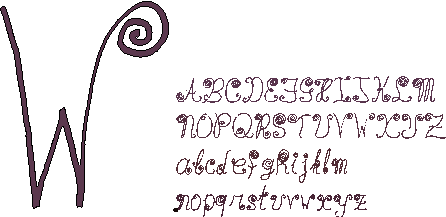
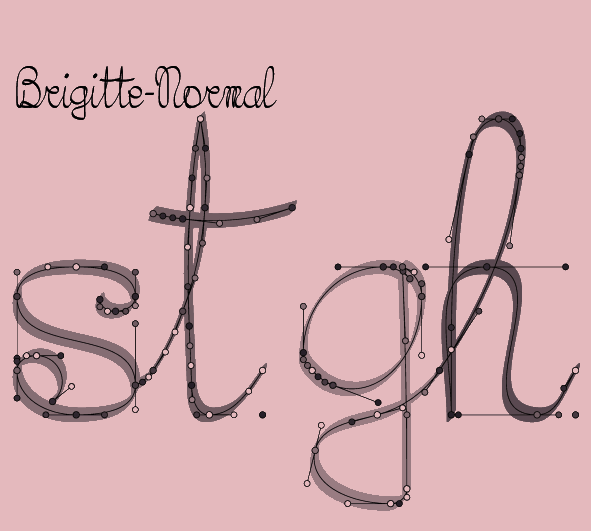

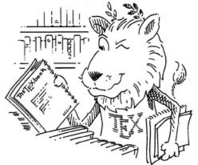 Donald Knuth's
Donald Knuth's 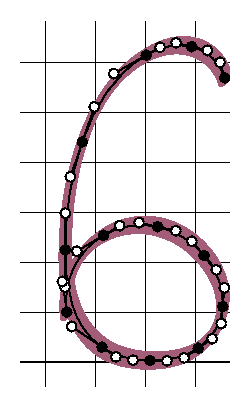
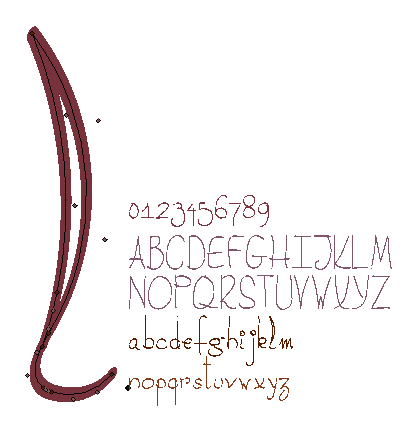
 With
With  Belgian type designer, font software expert, and defender of the principle of Open Source publishing. He had a hand in many typefaces at
Belgian type designer, font software expert, and defender of the principle of Open Source publishing. He had a hand in many typefaces at